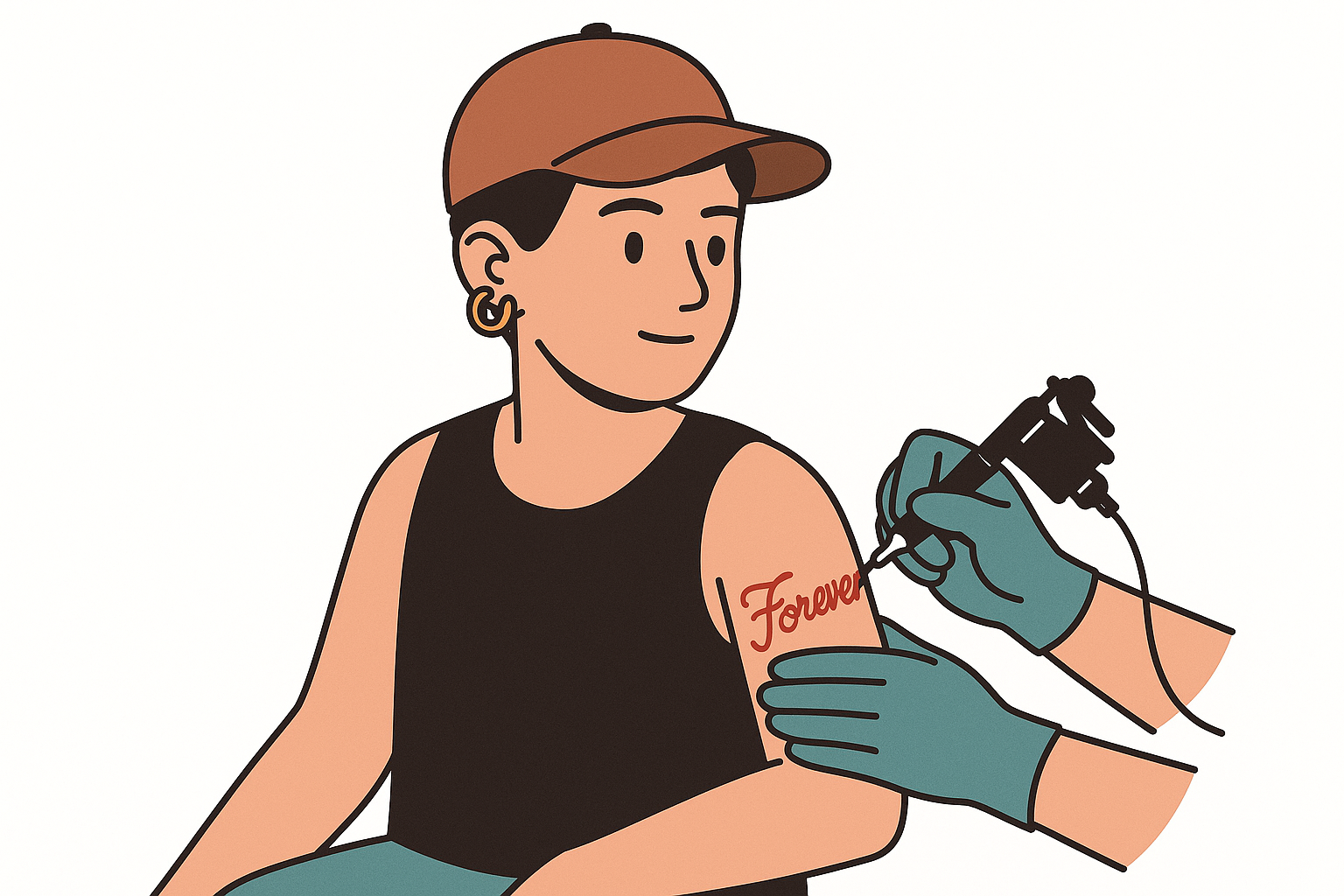Deciding on the right age to get a tattoo or piercing is an important consideration for many individuals interested in body modification. People often wonder if there is an optimal age that ensures safety, legal compliance, and emotional readiness. Generally, understanding the legal regulations and personal maturity level is crucial before making such a permanent decision.
Many young adults are attracted to lettering art for its unique aesthetic and personal significance. However, it’s essential to evaluate readiness both physically and psychologically to prevent regrets later in life. Exploring the best age helps ensure a positive experience and long-term satisfaction.
Legal Age and Regulations
The legal age for getting tattoos and piercings varies from one country or state to another. Most jurisdictions set the minimum age at 18, requiring parental consent for minors. These laws aim to protect young people from impulsive decisions and ensure proper health standards are maintained.
Operators of tattoo and piercing studios are responsible for verifying age and parental approval. They also must follow strict health and safety protocols to prevent infections or complications. Adhering to these regulations guarantees that the procedure is carried out responsibly and legally.
Understanding the legal guidelines is vital for anyone considering body art. Ignorance of age restrictions can lead to legal issues and complications. Therefore, researching local laws beforehand can help individuals make informed decisions about the appropriate age for such procedures.
Maturity and Emotional Readiness
The emotional maturity of a person plays a critical role in deciding when to get a tattoo or piercing. Body modifications are permanent, and making impulsive decisions can lead to regret. Being emotionally prepared involves understanding the commitment and potential consequences involved.
Assessing readiness entails contemplating the motivations behind wanting body art. Whether for self-expression, cultural reasons, or personal milestones, clarity of purpose is essential. Young individuals should ensure they genuinely want the design to avoid dissatisfaction later.
Additionally, maturity helps in handling the discomfort and recovery process associated with tattoos and piercings. A well-prepared mindset ensures compliance with aftercare instructions, reducing risks of infection or dissatisfaction with the results.
Physical Development and Skin Maturity
Physical development influences the safety and quality of body modifications like tattoos and piercings. During adolescence, the body is still growing, which can affect how the tattoo or piercing heals over time.
It’s generally recommended to wait until the body has fully matured physically, often in late teens or early twenties. This ensures the skin is stable enough to hold the ink or jewelry without distorting the design or causing complications.
Other than age, skin health and elasticity are significant factors. Healthy, well-hydrated skin improves the results and facilitates better healing. Ensuring proper skin care and hydration prior to getting tattooed or pierced is beneficial regardless of age.
Design Significance and Personal Growth
Choosing a design for a tattoo or lettering art is a deeply personal process. Many individuals select symbols or words that hold significant meaning for their life journey. The importance of understanding the long-term significance cannot be overstated.
As people grow older, their perspectives and values might change, leading to different preferences for body art. What seems meaningful during adolescence may differ later in life. This highlights the importance of selecting designs that resonate personally and can withstand the test of time.
Furthermore, some see tattoos as a form of self-expression that commemorates milestones or personal beliefs. Being certain about the design at a mature age ensures that the art reflects genuine feelings and reduces the chance of regret.
Health and Safety Considerations
Health is a crucial aspect when considering tattoos and piercings. Ensuring that the procedure is performed in a licensed, reputable studio reduces the risk of infections and complications. Age can influence the body’s ability to recover and heal from body modifications.
Younger individuals with developing immune systems need to be extra cautious. Proper sterilization protocols and hygiene practices are vital for safe procedures. Consulting with qualified professionals helps in assessing any health risks based on age and physical condition.
It’s also important to follow aftercare instructions diligently. Proper aftercare minimizes the risk of infections and promotes proper healing. Regardless of age, prioritizing health and safety guarantees a more satisfying experience with body art.
Cultural and Social Acceptance
Cultural norms and societal attitudes toward tattoos and piercings vary widely around the world. In some cultures, body modifications are a rite of passage, while in others, they may be viewed with skepticism, especially for minors.
Individuals considering body art should be aware of the social environment and potential consequences. This understanding helps in making informed decisions that align with personal values and social expectations.
Age can influence how society perceives body modifications. Some workplaces or educational institutions have policies regarding visible tattoos and piercings. Young people should consider these factors and discuss with family or mentors before proceeding.
Deciding the best age for getting tattoo and piercing lettering art involves a combination of legal, emotional, and physical factors. Ensuring compliance with local laws, evaluating personal maturity, and considering physical readiness are essential steps in making a safe decision.
Ultimately, patience and thoughtful planning lead to more meaningful and satisfying body modifications. Waiting until the appropriate age allows individuals to fully understand the implications and enjoy their body art with confidence and pride.


